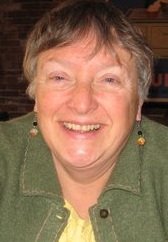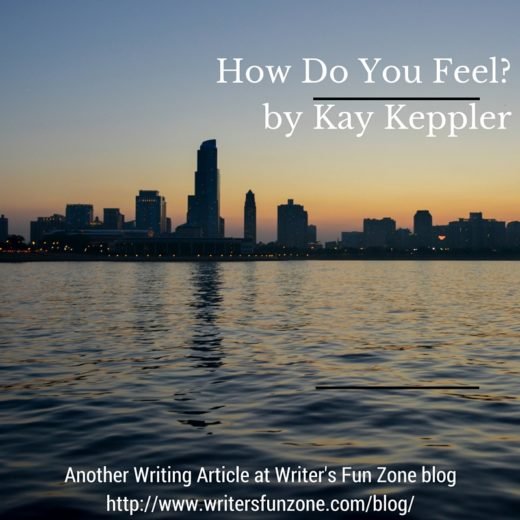How To Write the Setting of a Story: Finding the Right Place
Welcome to the next installment of craft posts by monthly guest columnist, Kay Keppler. Today she’ll share about setting and its important. You can contact Kay through the Writer’s Fun Zone or at kaykeppler@yahoo.com to ask questions, suggest topics, or tell her she’s off her rocker. (She let me say that!)
***
Your characters do not act in a vacuum. They live somewhere—in a house, an ocean, a country, planet, period, zeitgeist, vacuum. Often they travel to somewhere else, or aspire to. They carry baggage—metaphorical as well as literal. They have history and a future, cultural attitudes and speech patterns.
These elements are your setting.
Sometimes setting is little more than decoration. Think of Sleepless in Seattle. The title is catchy, but did the movie have to take place in that city? Perhaps Sleepless in Milwaukee or Sleepless in Boise wouldn’t pack the same romantic punch, but could that movie have happened someplace else without losing any of its charm? Could it have been, for example, Sleepless in San Francisco? Sure.
Not just a pretty picture
But setting can do a lot more than provide a pretty backdrop for your characters. It can enhance all your other story elements. For example, setting can:
- Expand or clarify themes
- Build story unity
- Tighten plot structure and intensify suspense
- Motivate and explain character
- Intensify reader involvement
Your setting can be anonymous, part of a specific past, contemporary location, or nameless future, but it is an intrinsic element to your story. It gives your characters their context and flavor—and space to grow or fester, depending.
Think of Robinson Crusoe. Daniel Defoe set his forlorn, washed-up survivor on a tropical island. Could he have set him on some other island—say, for example, Manhattan? Uh, no. Setting plays a crucial role in this story, as important a role as plot or character. In Robinson Crusoe and The Wizard of Oz, setting is so important and so fully realized that the story couldn’t possibly take place anywhere else. Setting is crucial to the short story, “The Lottery,” too, although in a different way. Set in a nameless farming town, by the time readers reach the horrifying conclusion, they inevitably ask, “Where could this possibly happen?”
Just the facts, ma’am
If you set your story in a real place, it needs to be as factual as you can make it. Readers will know if you let your character drive the wrong way down a one-way street. If you get that wrong, they won’t forget—and they won’t trust you with all the stuff you do get right.
But we’re writing fiction, after all. If we couldn’t make stuff up, we’d be calling it documentary.
Go ahead. Invent all the towns, countries, people, galaxies you want. If you invent a Bedouin village in the Sahara, though, make sure that it’s hot and dry there. Or that there’s ice in Antarctica. Unless you’re writing a dystopian novel about the future, and the deserts have turned green and the ice has melted.
When you make stuff up, make your facts true to each other. Make your world consistent. If you don’t, there will be hell to pay. Check out some of the Amazon reviews for Charlaine Harris’s Sookie Stackhouse novels, and you’ll see how readers will focus on the minutest details with the vision and intensity of a laser, complaining that in book umpty-ump, such-and-such a character could not possibly have known the other character two books later, because the membrane hadn’t rippled yet. Or something like that.
Having your readers care that much about your world is a wonderful and terrifying experience. They won’t hesitate for a second to call you out on the most trifling piece of minutia. And for these readers, if you don’t get that membrane ripple just exactly right, well, the world is lost, the pleasure destroyed, the reader experience trashed.
And that’s not a pretty picture.
***
 Kay Keppler (www.kaykeppler.com) is an author (Zero Gravity Outcasts, Betting on Hope) and editor of fiction and nonfiction (Asylum Harbor, Pragmatic Guide to Sass) who lives in northern California. Thanks to Orson Scott Card and his book Characters & Viewpoint (Writer’s Digest Books) for help with this column. Contact her here or at kaykeppler@yahoo.com to ask questions, suggest topics, or if you prefer, complain.
Kay Keppler (www.kaykeppler.com) is an author (Zero Gravity Outcasts, Betting on Hope) and editor of fiction and nonfiction (Asylum Harbor, Pragmatic Guide to Sass) who lives in northern California. Thanks to Orson Scott Card and his book Characters & Viewpoint (Writer’s Digest Books) for help with this column. Contact her here or at kaykeppler@yahoo.com to ask questions, suggest topics, or if you prefer, complain.







